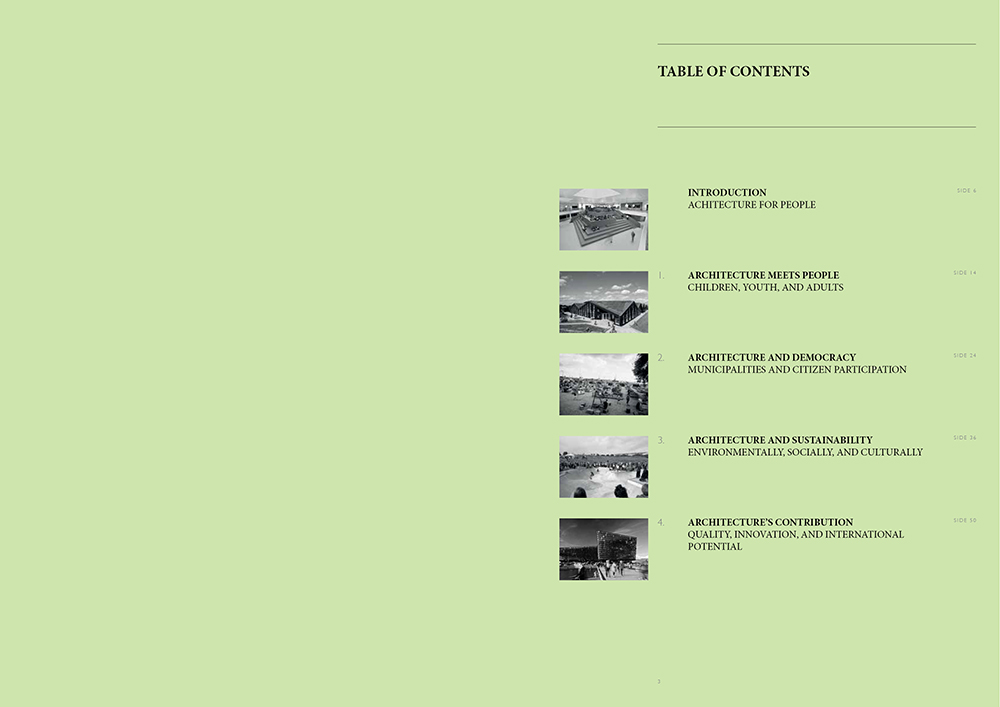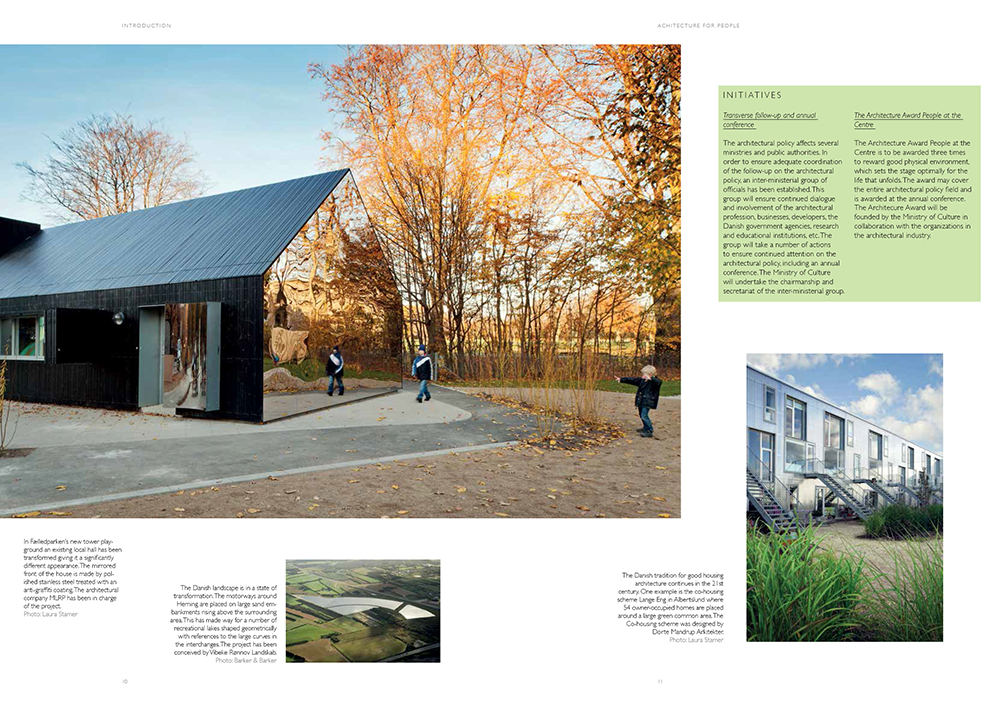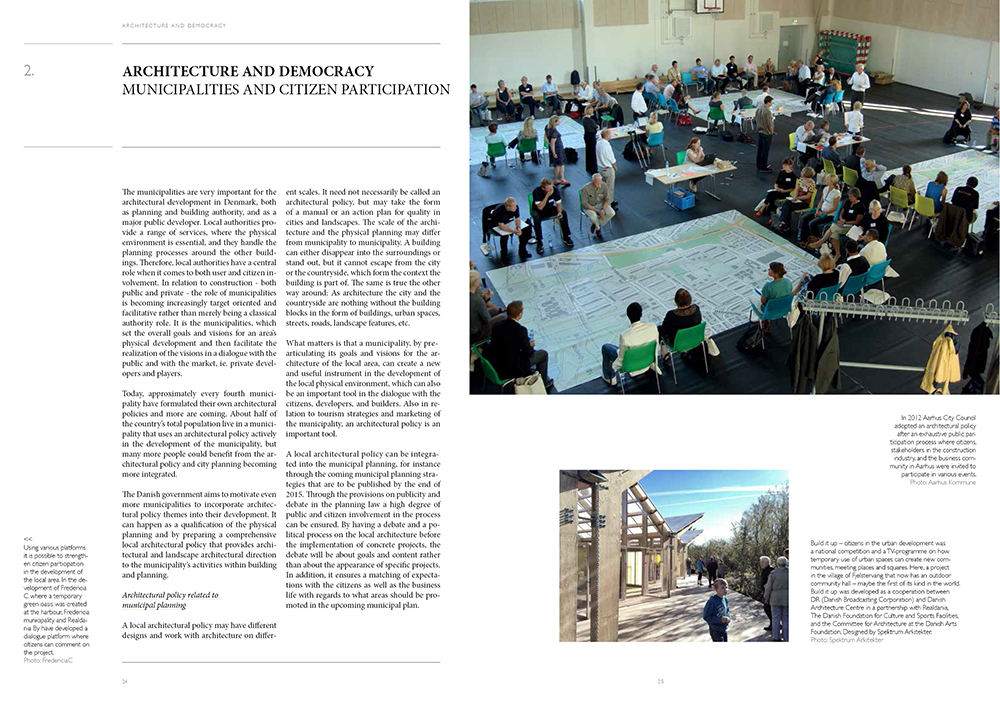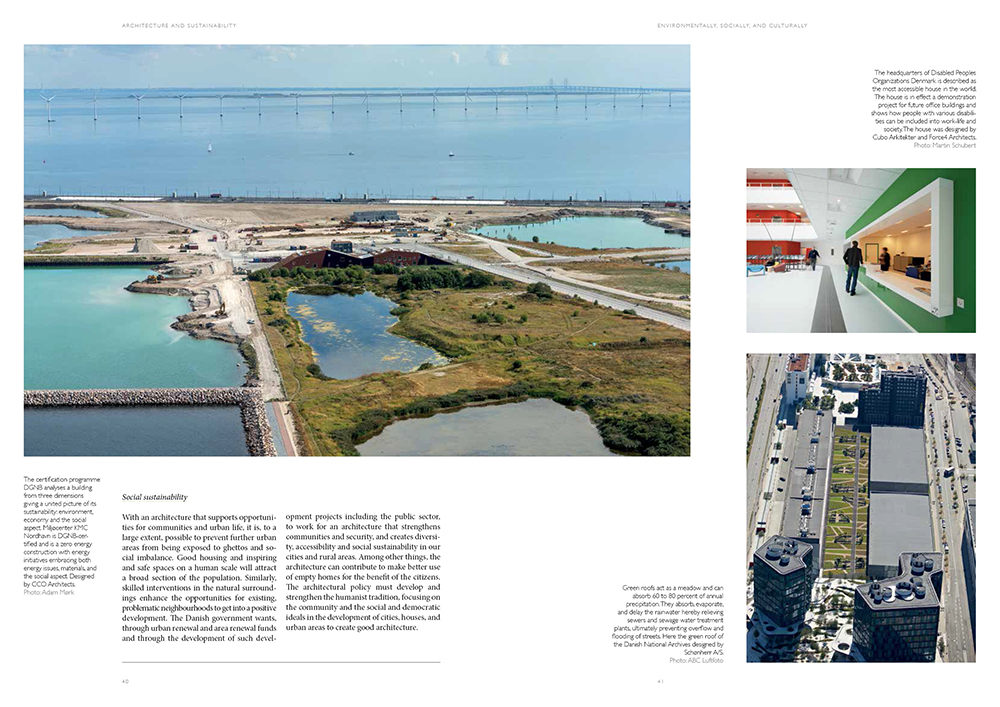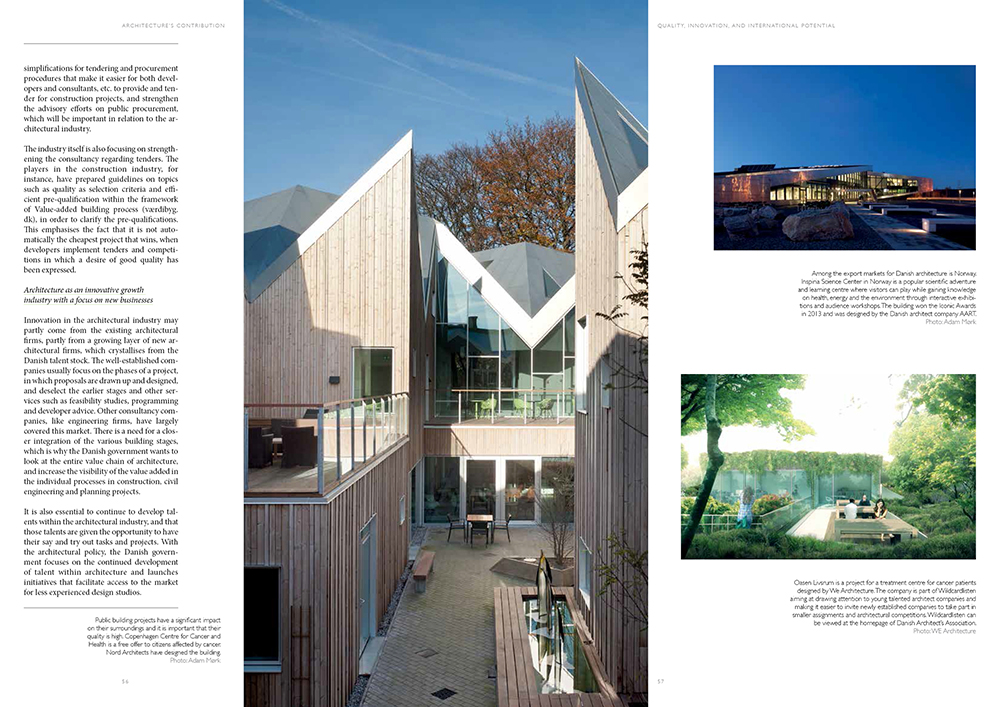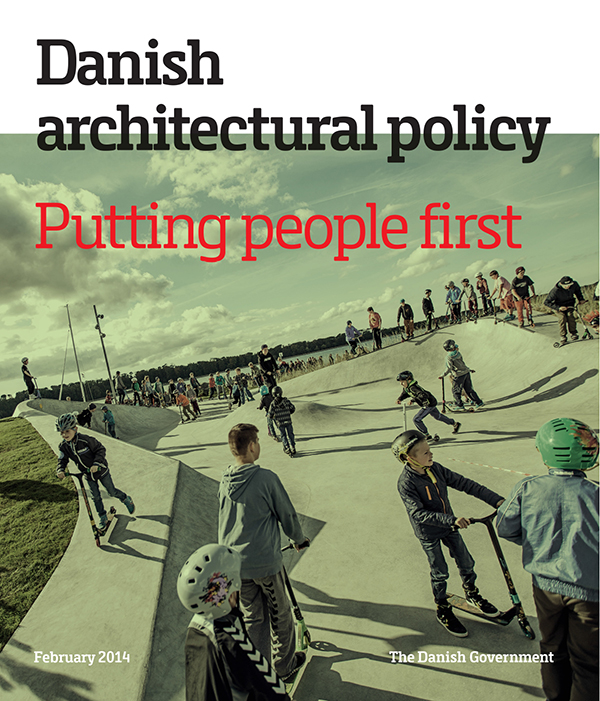Denmark – With the sheer number of buildings under construction in our cities, it’s easy to dismiss architecture as something that’s predictable and inevitable at the hands of developers. But what if developers and policy makers favoured other objectives, like people and sustainability, through government initiatives? Denmark’s government has done just this through the development of a national architectural policy. After close collaboration between various government ministries and stakeholders, the national architecture policy developed by the Ministry of Culture was originally introduced in 2007 to “promote Danish architecture abroad and provide a platform for raising standards in Denmark.” The latest revision, launched in 2014, is entitled “Putting People First”. This is an innovative piece of legislative guidance which outlines targets for design excellence, energy efficiency, and social sustainability through 64 specific initiatives in various ministerial fields of responsibility. Some of the initiatives focus on enhancing citizens’ experience of architecture and their participation in democratic processes. Other initiatives focus on how architecture can promote sustainability and quality of life. One of the key facets of the architecture policy is an insistence that high quality design is not only admirable on its own terms, but makes economic sense as well. In a section on public sector construction, the document asserts: “Public construction development should continue to place major priority on the long term economic gains of high architectural quality and not the short term financial gains that can be achieved if the owner compromises on demands for architectural quality.” On social sustainability: “Architecture also has implications for social sustainability, because good architecture, in which both homes and cityscapes support communities and urban life, can help to ensure new urban areas against ghettoisation and social imbalances while supporting the development of diverse and spacious areas that are accessible to all.”
Policies like this are an important step toward recognizing the effect that architecture has on people. We interact with buildings everywhere and every day, so why shouldn’t we try to create the best cities and environments possible? As Canadians, having our government not only support but actually promote design excellence and sustainability, rather than being required to hire the lowest bidder, is something that we should strive for.
